Black Salamander
- March 12, 2024
- 0 comment
In the shadowy underbrush of forests and the moist crevices of mountainous terrains, the Black Salamander (Aneides flavipunctatus niger) emerges as a creature shrouded in mystery and allure. This elusive amphibian, with its sleek, jet-black skin, is not just a marvel of nature’s design but also a subject of significant scientific interest due to its unique adaptations and conservation status.
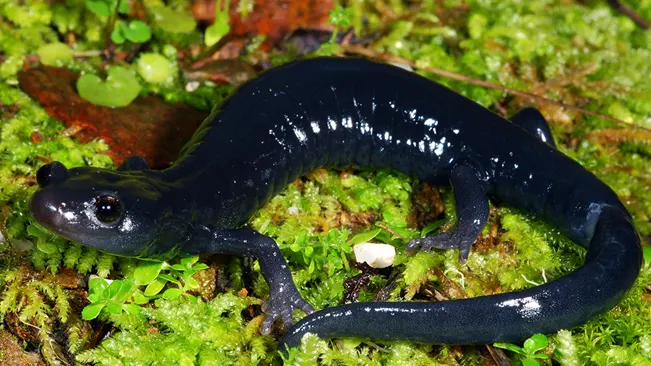
| Characteristic | Description |
|---|---|
| Species | Various, often within the genus Aneides |
| Common Habitat | Moist, forested environments and rocky outcrops |
| Diet | Invertebrates such as insects, worms, and spiders |
| Lifespan | Up to 20 years or more, depending on the species |
| Conservation Status | Ranges from stable to threatened, varies by species |
| Activity Period | Primarily nocturnal, active at night |
| Reproduction | Varies, some lay eggs in moist environments with possible parental care |
| Importance | Control insect populations, indicate healthy ecosystems |
| Regeneration | Can regenerate lost body parts, including tails and limbs |
| Conservation Efforts | Habitat protection, pollution reduction, support for research |
Physical Description
Characterized by its striking black coloration, which can vary from glossy jet black to a dark charcoal, the Black Salamander exhibits a robust and agile physique. Adults can vary in size but typically range from 4 to 7 inches in length. This dark pigmentation is not just for camouflage in the dimly lit undergrowth but also plays a role in thermoregulation. The Black Salamander’s skin secretes a slimy mucus, aiding in moisture retention, which is crucial for its respiratory process, as salamanders breathe through their skin.
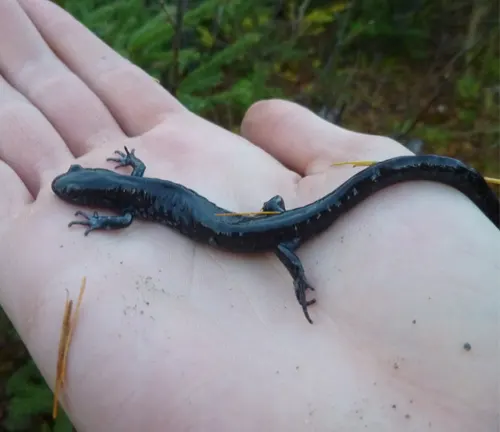
Size
The size of adult Black Salamanders ranges notably, with individuals measuring between 4 to 7 inches in length. This variability in size is influenced by factors such as the salamander’s age, with younger salamanders being smaller, and environmental conditions that can affect their growth rate and overall size throughout their lifespan.
Body Structure
The Black Salamander boasts a robust and agile body structure, designed for swift and efficient movement through its diverse habitats, from dense forest floors to rocky crevices. Its body is slightly elongated, a common trait among many salamander species, which aids in navigating the complex underbrush and tight spaces where it seeks refuge and hunts for prey.
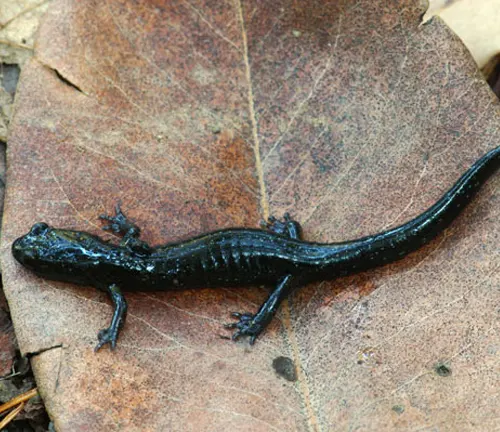
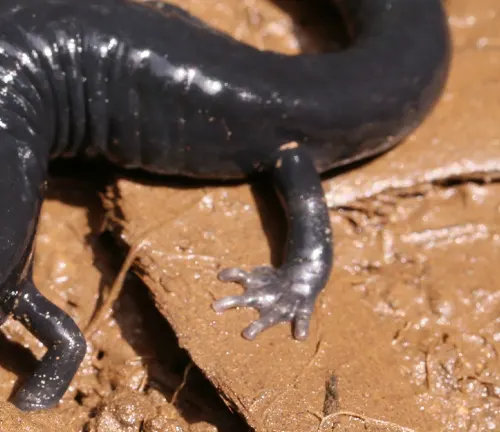
Limbs
Each Black Salamander is equipped with four well-developed limbs, each ending in four to five dexterous toes, designed to navigate a range of terrains with ease. These limbs and toes are specially adapted for gripping and moving across diverse surfaces, enabling them to effortlessly traverse through the dense underbrush of forest floors as well as scale the intricate formations of rocky crevices.
Eyes
Black Salamanders possess prominently large eyes, finely tuned to excel in low-light conditions, a feature that allows them to navigate and thrive in the dimly lit undergrowth of their habitats. This enhanced visual capability is not only vital for detecting their prey with precision but also plays a key role in sensing potential predators, ensuring their survival in the wild.
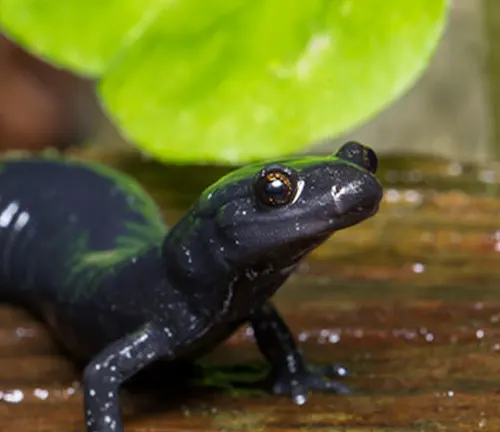
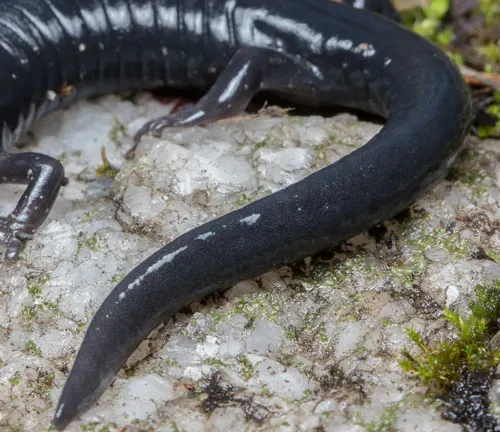
Tail
The muscular tail of the Black Salamander serves multiple vital functions beyond mere movement, acting as an indispensable balance aid on land that enhances their agility and stability. When submerged in aquatic environments, this same tail becomes a powerful tool for propulsion, enabling them to navigate through water with ease and making them exceptionally agile swimmers.
Habitat and Distribution
The Black Salamander’s habitat and distribution are as diverse and intricate as the creature itself, primarily located within specific locales across the California. This species demonstrates remarkable adaptability, inhabiting an extensive range of environments from the lush coastal woodlands to the rugged, high-altitude forests that define much of this region.

The salamander’s profound affinity for cool, moist conditions fundamentally influences its distribution patterns and daily habits, establishing it as an essential player in maintaining the ecological balance of its habitat. Within these habitats, Black Salamanders lead a reclusive existence, often seeking refuge under the protective cover of leaf litter, nestled within natural crevices, or beneath fallen logs. Their activity peaks during the nocturnal hours or amidst the concealing embrace of dense fog and mist, times when they emerge to hunt and explore their surroundings. This preference for dim light and moisture-rich environments underscores their critical role in the ecosystem, contributing to the intricate web of life that sustains these verdant landscapes.
Diet and Behavior
As a carnivorous creature, the Black Salamander’s diet consists primarily of small invertebrates, including insects, spiders, and worms. Its hunting strategy is one of patience and precision, using its keen sense of smell and sight to detect prey, before quickly capturing it with a swift movement of its tongue.
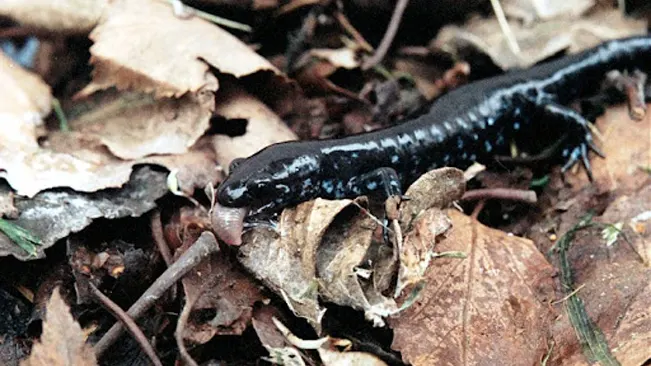
The behavior of the Black Salamander is marked by its secretive nature. They are solitary animals for most of the year, except during the breeding season when they seek out partners. Communication among Black Salamanders is a fascinating area of study, involving a combination of chemical signals and body language.
Nocturnal Activity
Black Salamanders are primarily nocturnal, emerging from their hiding spots at night to hunt and explore. This behavior helps them avoid predators and conserve moisture.
Solitary Nature
Except during the breeding season, these salamanders are solitary creatures. They prefer to live and hunt alone, coming together only for mating purposes.
Carnivorous Diet
They have a carnivorous diet, feeding on small invertebrates like insects, spiders, and worms. Their hunting strategy relies on stealth and quickness to capture prey.
Moisture-Dependent
Staying in moist environments is crucial for their survival, as their skin needs to be wet for respiration. They are often found in damp, shaded areas that provide the necessary humidity.
Territorial Behavior
During the breeding season, males may exhibit territorial behavior to attract females and deter rivals. Such behavior includes posturing, displaying their body, and sometimes engaging in physical confrontations.
Breeding Rituals
Black Salamanders have unique breeding rituals that include chemical and physical signaling to attract mates. These rituals are important for ensuring successful reproduction.
Climbing Abilities
While primarily ground-dwellers, Black Salamanders can climb trees and rocks in search of food or habitat. This ability demonstrates their adaptability and agility.
Defensive Mechanisms
When threatened, they can exhibit various defensive mechanisms, including secreting a bitter mucus to deter predators. Some may also attempt to flee or display their body to appear larger.
Seasonal Behavior
Their activity levels and behaviors can change with the seasons, being more active during wet periods and less so during dry or cold times. This seasonal behavior helps them manage energy reserves and moisture levels.
Communication
Communication among Black Salamanders involves a combination of chemical signals and body language. This is crucial for territory establishment, mating, and signaling distress or readiness to breed.
Conservation Status
The conservation status of the Black Salamander varies by location, with some populations being considered stable, while others are threatened by habitat destruction, pollution, and climate change. Conservation efforts focus on habitat preservation and the mitigation of factors that disrupt the salamanders’ delicate ecological balance. Research and monitoring are crucial for understanding population dynamics and implementing effective conservation strategies.
Different Species
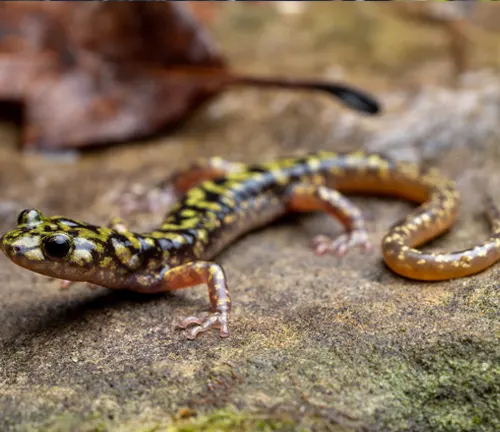
Aneides aeneus (Green Salamander)
Despite its common name, this species can exhibit dark colorations, especially in certain environmental conditions. It is found in the Appalachian region of the United States.
Aneides ferreus (Clouded Salamander)
Located in the Pacific Northwest, this salamander prefers cool, damp forests. Its color can vary, with some individuals displaying darker hues.
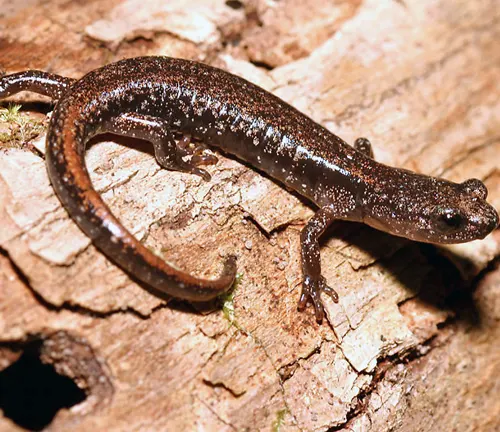

Aneides hardii (Sacramento Mountain Salamander)
This species is native to the Sacramento Mountains of New Mexico and is adapted to live in moist coniferous forests.
Aneides lugubris (Arboreal Salamander)
Known for its climbing abilities, this species can be found in California, residing in oak and redwood forests. It often has a dark brown color that can appear black.
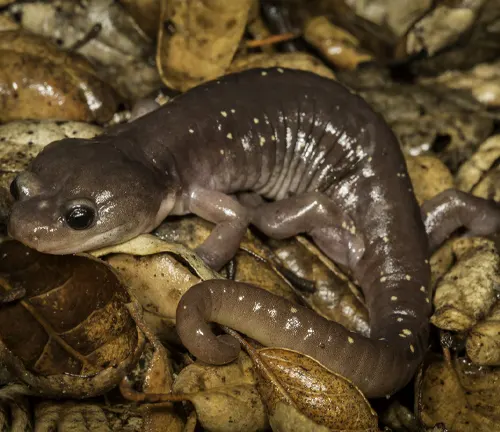
Conclusion
The Black Salamander is a captivating species whose presence enriches the biodiversity of its habitat. Its study not only sheds light on the complexities of amphibian biology and ecology but also underscores the importance of conservation efforts in preserving these remarkable creatures for future generations. As we delve deeper into the lives of these shadowy inhabitants, we uncover more about the intricate balance of nature and our role in its preservation.
Frequently Asked Questions (FAQs)
- What are Black Salamanders?
Black Salamanders are a group of amphibians known for their dark coloration, which ranges from dark brown to jet black. They belong to various species, many within the genus Aneides. - Where do Black Salamanders live?
They are primarily found in the United States, with their habitats ranging from the Appalachian regions to the forests of California and the Pacific Northwest. Their specific habitat preferences include moist, forested environments and rocky outcrops. - What do Black Salamanders eat?
Black Salamanders are carnivorous, feeding on a variety of invertebrates such as insects, worms, and spiders. Their diet varies depending on their size and what is available in their environment. - How do Black Salamanders reproduce?
Reproduction varies among species, but many Black Salamanders lay eggs in moist environments like under logs or in leaf litter. Some species exhibit parental care, with the female guarding the eggs until they hatch. - Are Black Salamanders nocturnal?
Yes, many species of Black Salamanders are nocturnal, coming out at night to feed. This behavior helps them avoid predators and reduce water loss through their skin. - Can Black Salamanders regenerate lost body parts?
Like many salamanders, certain species of Black Salamanders have the remarkable ability to regenerate lost body parts, including tails and limbs, a process that has fascinated scientists. - Why are Black Salamanders important to the ecosystem?
They play a crucial role in controlling insect populations and are also prey for other animals, making them an integral part of the food web. Additionally, their presence indicates a healthy ecosystem. - Are Black Salamanders endangered?
The conservation status varies by species. While some populations are stable, others are threatened by habitat loss, pollution, and climate change. Conservation efforts are ongoing to protect vulnerable populations. - How long do Black Salamanders live?
The lifespan of Black Salamanders varies by species, but some can live up to 20 years or more in the wild, depending on environmental conditions and predation pressures. - How can I help conserve Black Salamanders?
Conservation efforts include protecting their natural habitats, reducing pollution, and supporting amphibian research and conservation organizations. Educating others about the importance of salamanders and their ecosystems also helps their preservation.



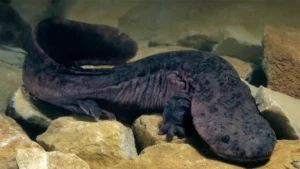
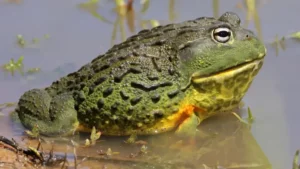
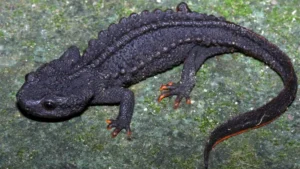
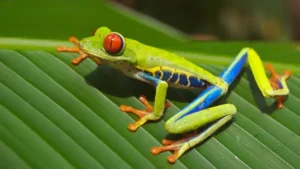



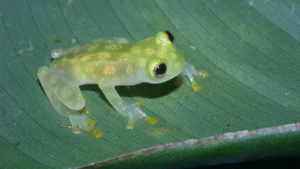
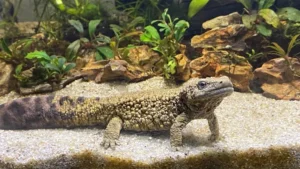
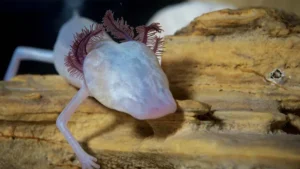
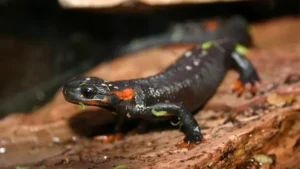
Leave your comment